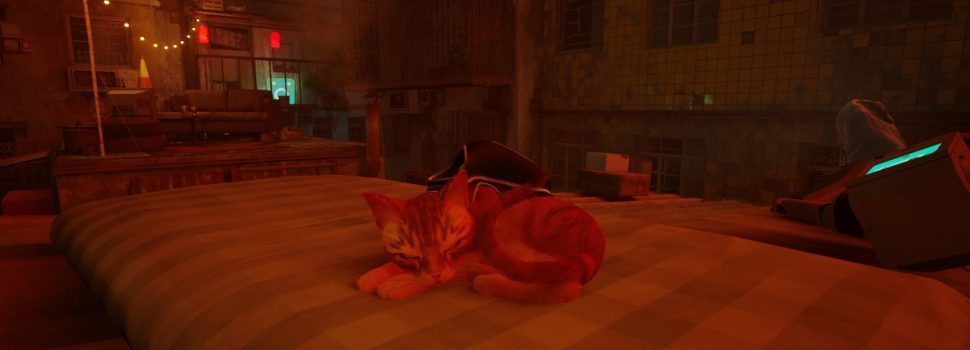
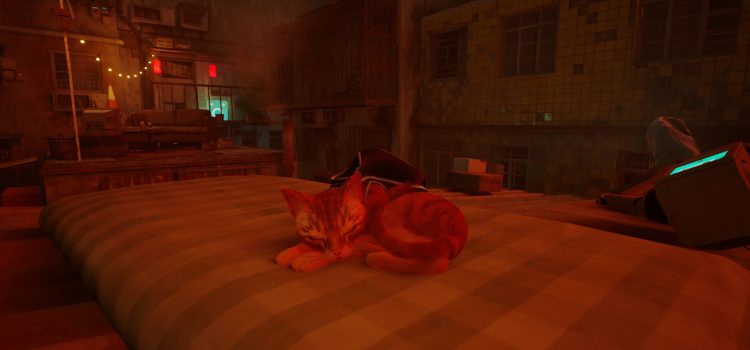
Stray Review: Why This Great Game Starring A Cat Is A Commentary On Humans
GamingNewsReviews July 27, 2022 Mecha Sushi 0
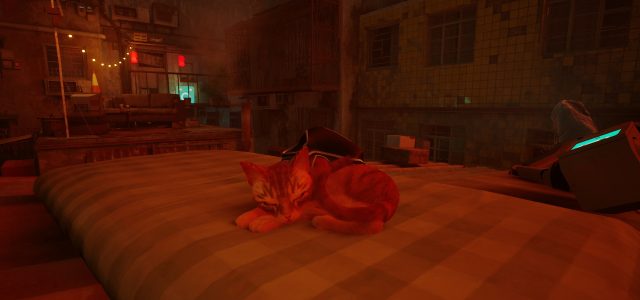
[Warning: Huge spoilers ahead]
Your social media feeds have probably been bombarding you with images of an orange tabby weaving through a post-apocalyptic town of trash and robots, but it’s definitely for good reason–Stray, an adventure game developed by BlueTwelve Studio and published by Annapurna Interactive, has a great story punctuated by heart-pounding scenes and touching moments.
Stray Review: An Introduction
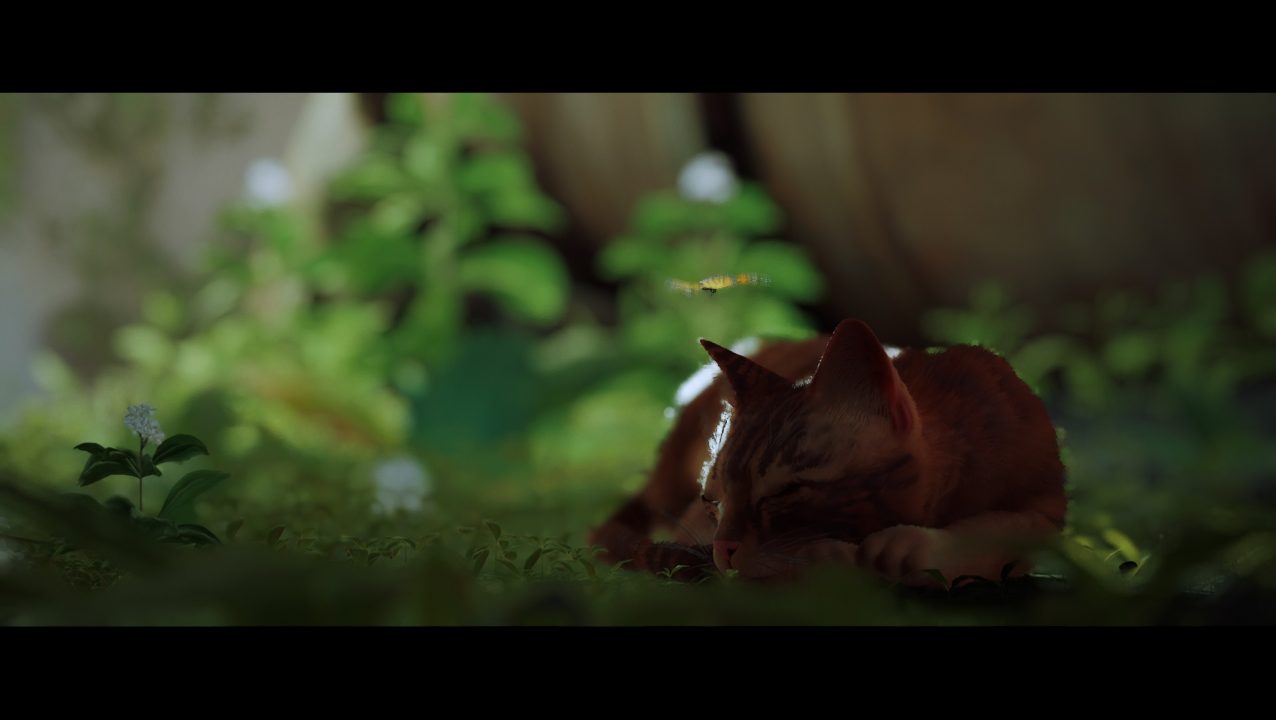
You play a cat living a quiet life in what seems to be the ruins of a man-made structure long reclaimed by nature. After an unfortunate jump during one of your explorations, you fall into a deep ravine, ending up in an old tunnel that opens into an abandoned town full of tiny, angry creatures that you later learn are called Zurks. These Zurks look like giant, fleshy ticks that pounce on you, and unless you manage to shake them off, you’ll end up losing all your nine lives.
As you weave through alleyways, curious neon signs light up, asking you to follow them. You end up in a flat where a being who has been “trapped in a network” for years tells you that it needs a body. After succeeding in downloading it into a small drone, the being introduces itself as B-12, saying that it has no memory, only that it worked with a scientist a long, long time ago.
With your traveling companion, you find yourself in a place called The Slums. A compound of compact buildings haphazardly refurbished to be usable and comfortable, The Slums is home to robots who have been hiding away for centuries in an attempt to keep safe from the Zurks that would eat anything–even metal.
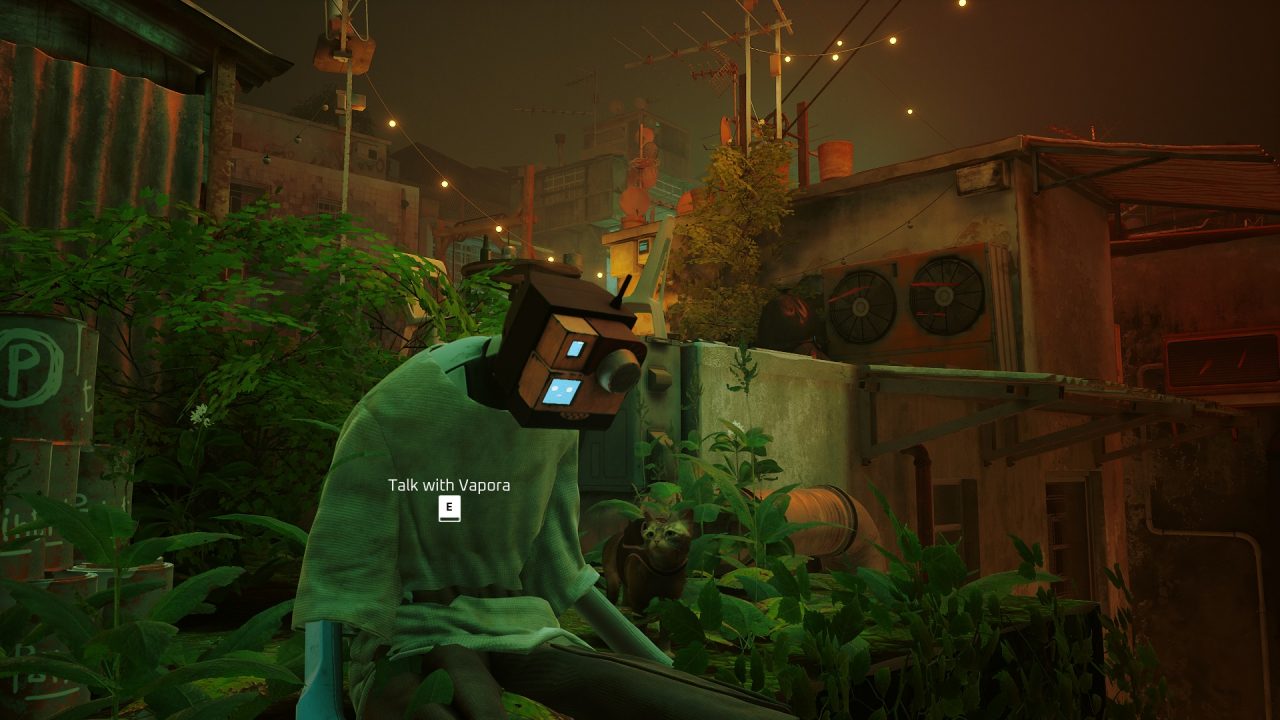
Through your interaction with the robots, you learn that they have fond stories of The Soft Ones (humans) who have built the city and have long been extinct. You also learn of the Outside–the place where you’re from–and how a group called “Outsiders” have forever tried to leave The Slums, head to the upper level of Midtown, and open up the walled city. You work with the Outsiders, discovering colonies along the way, and unearthing the history behind the Zurks, and how humankind was lost to a plague.
Games focusing on plagues and the extinction of humans aren’t new, but Stray is definitely one that gives a unique perspective. As a cat, you get to be the observer: literally, you can see things from a bird’s eye or a worm’s eye view. Along the way, you learn more about B-12 and you get to know the community of Companions (the robots), yet somehow things still remain uncomplicated as your singular goal remains: to head up and escape to the Outside.
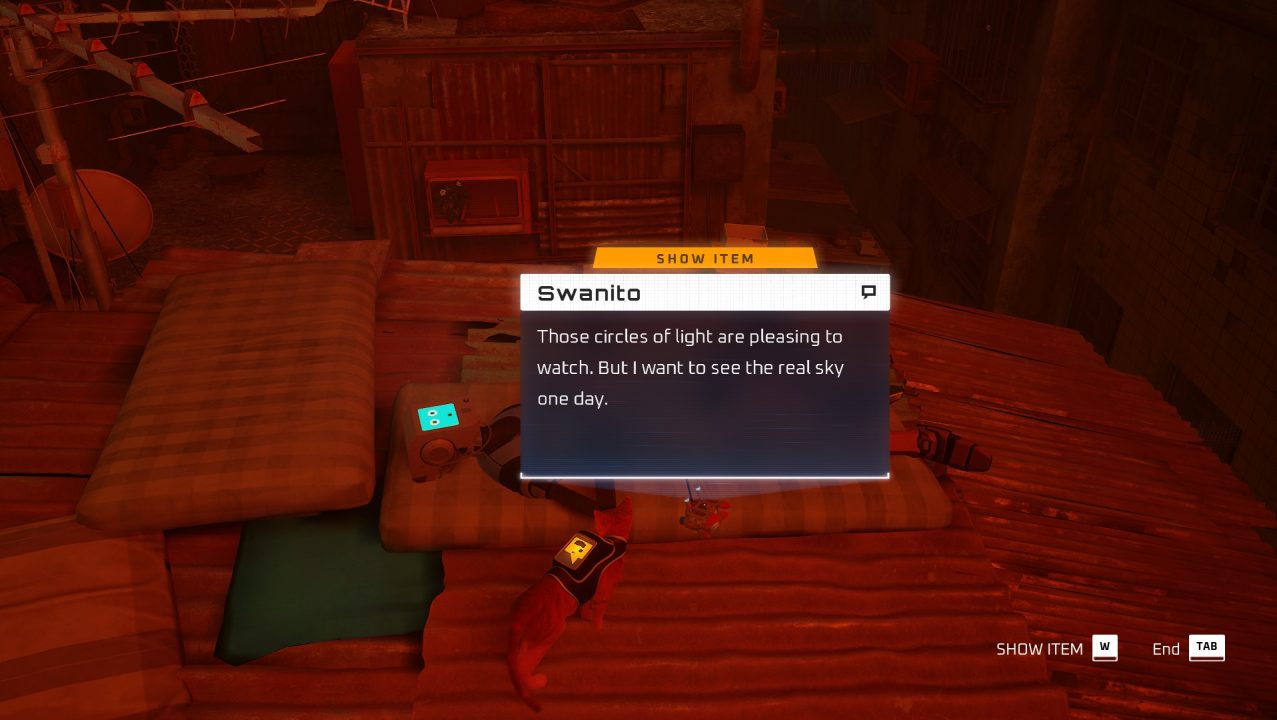
It is through this simplicity that Stray manages to walk the fine line between a horror-adventure story and a sweet fairytale–the cat’s way of finding and protecting its new clowder in the form of B-12 and the Companions is endearing and at times painful to witness. But while the cat seems to skim through the nuances of how things had come to be in the walled city, you, as the player, end up asking a lot of questions after you’ve finished the game. Moreover, it’s hard not to compare it to what actually has been happening in real life, making you wonder if humans will eventually cause their own extinction.
Stray Review: World-building
The world of Stray was inspired by Hong Kong’s old Kowloon Walled City. The dark alleys and rundown rooms are given an eerie glow by neon lights, which, within the story, was once an act of rebellion against authority.
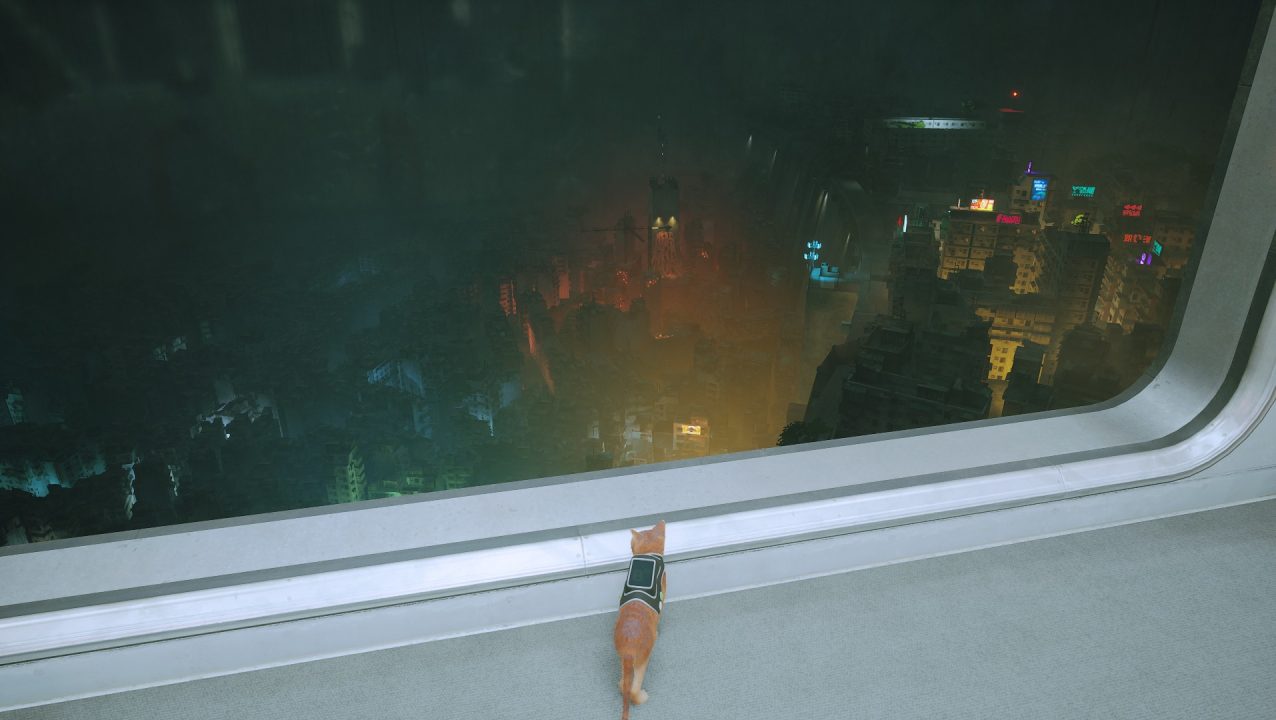
The Slums was once upon a time the garbage bin of humans living in Midtown, and while it was indeed dingy, the soft neon lights added a bit of warmth and coziness to the atmosphere, reflecting the mostly welcoming nature of the Companions that reside there.
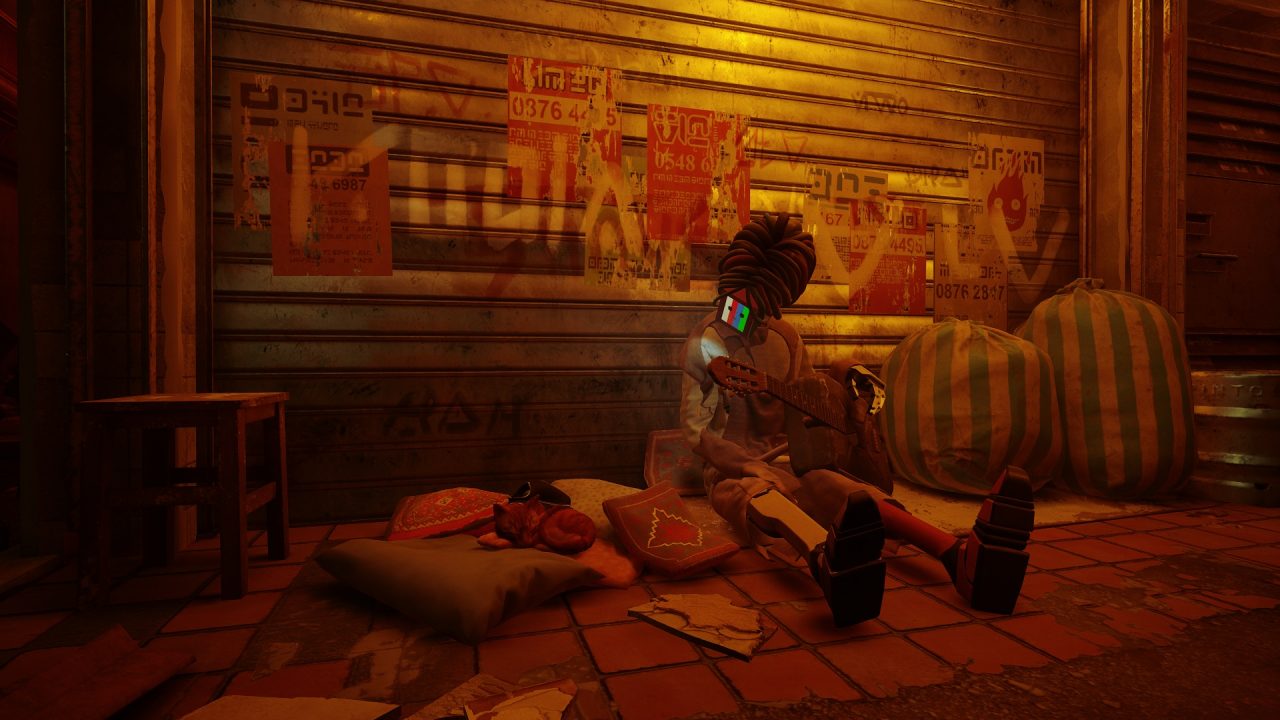
This is in contrast to Midtown. While it’s a more “developed” area, many of its inhabitants were colder and haughtier, with one even noting that it never understood why many were against the oppressive authority of the Sentinels (robots that policed the area) because it had a great relationship with them.
Midtown’s bustling design has a pocket of warmth in the Companion’s residential area, where the Outsider Clementine resides. Clementine’s eclectic home is gorgeous, and almost reminiscent of a New York flat. It’s also comparable to many of our homes during the pandemic, when a lot of people started collecting plants. The world of Stray is in fact quite relatable, and the way the game’s already extinct humans have once acted is more or less true to form.
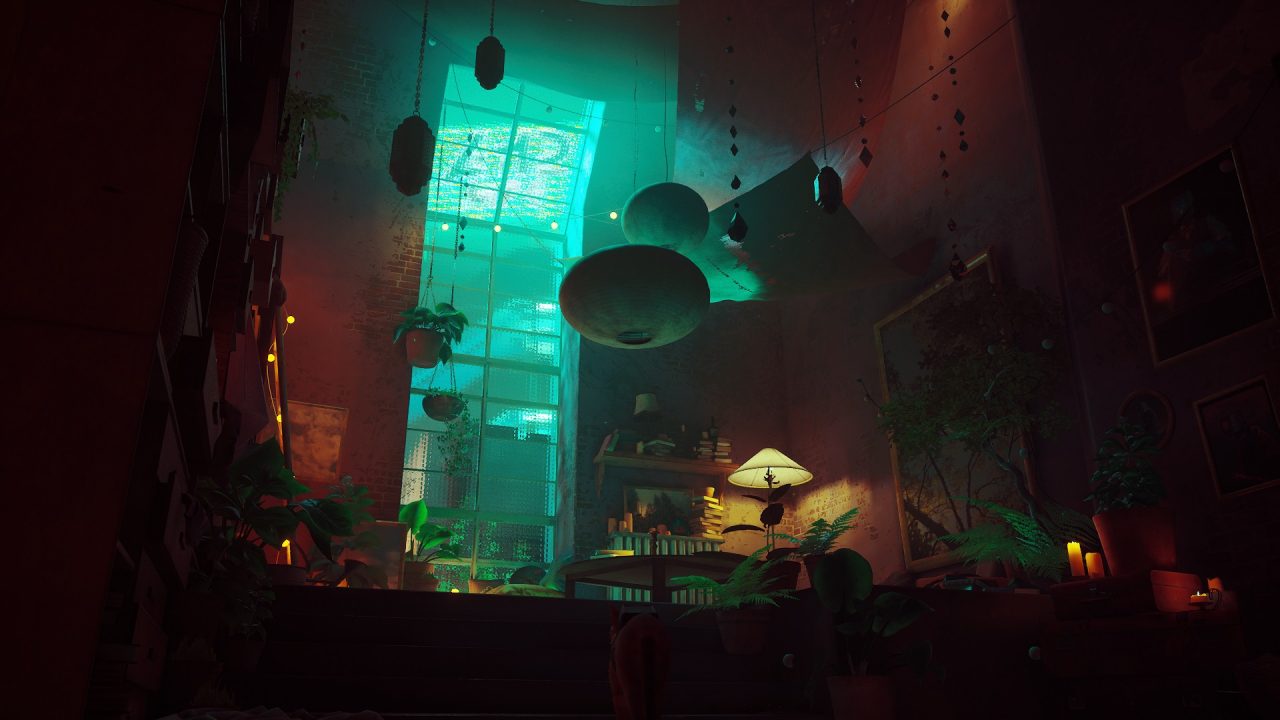
Stray Review: The Zurks
You see very few organic creatures in Stray, with the good ones mostly being animals and plants, and the nasty ones being the Zurks.
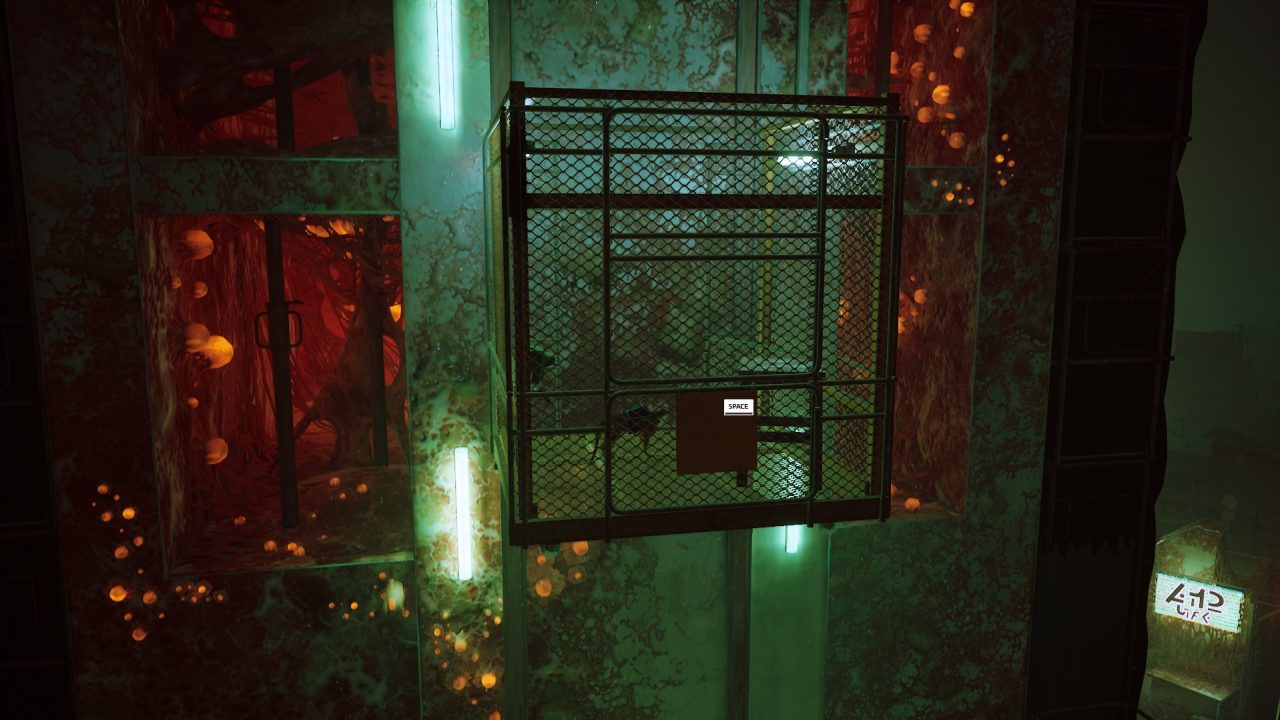
When humans still existed, those who lived in Midtown would throw their trash to The Slums. The Zurks, which were created by Neco Corp., were in charge of eating up the garbage, and when the humans disappeared they were left unchecked, until they turned into the little monsters they are now.
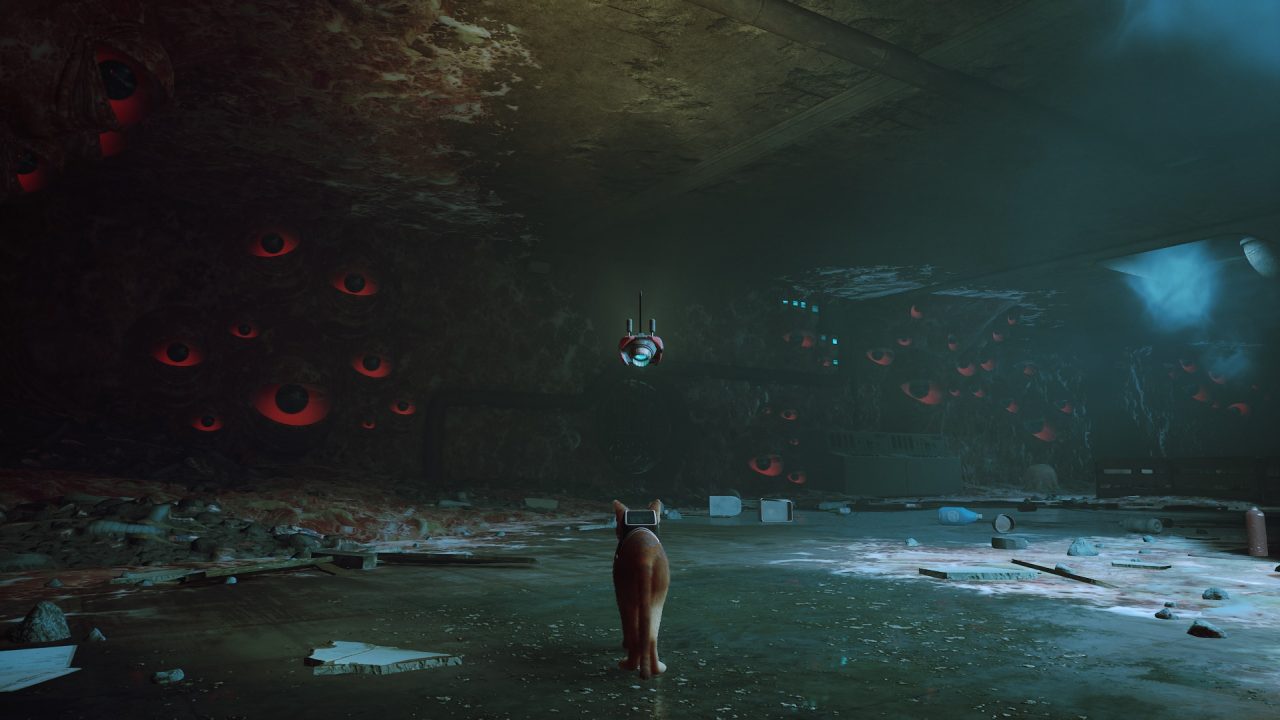
The Zurks may seem like a random infestation, but it looks like they are controlled by a larger intelligence, which you get to partly see as you travel through the sewers. The creepy, slimy eyes that follow you around are a far cry from the comforting surveillance of B-12 at the beginning of the story, and it’s almost an interesting contrast that there’s more humanity in something robotic than there is in something organic.
Stray Review: The Humans
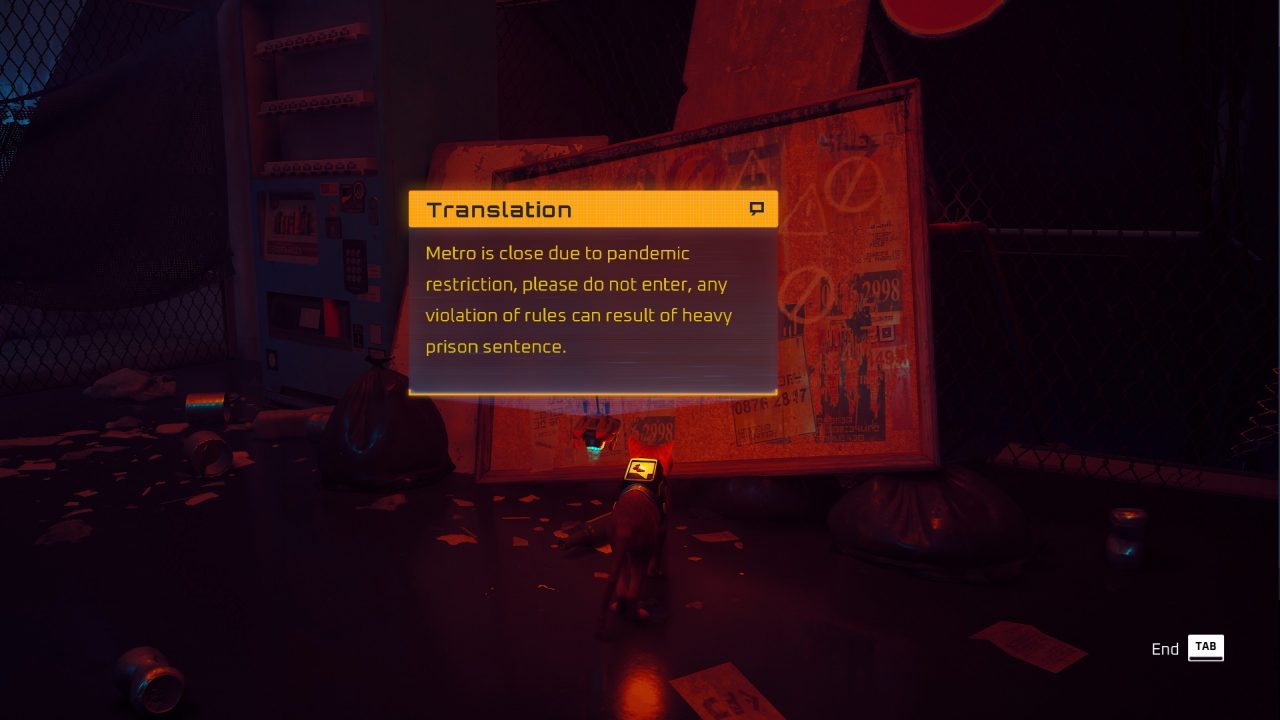
You never see humans in Stray, but the effects of their decisions are far-reaching. When you discover the story of Neco Corp., the Zurks, and The Slums, you understand the anger of B-12 towards them despite (spoiler alert) being one of them a long time ago.
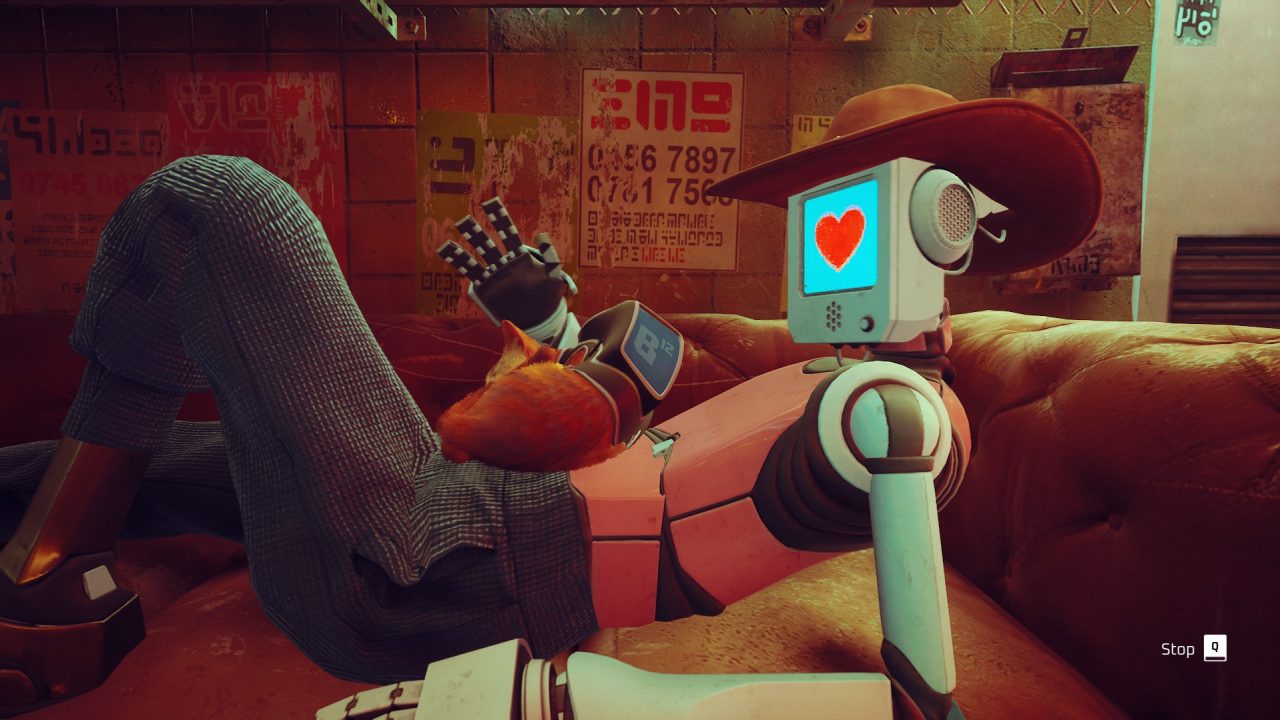
It’s easy to hate the extinct humans of Stray, but as the story goes on, you realize that the Companions, who were initially created as assistants, have developed personalities and a language of their own to emulate their creators who have long gone–and especially for those in The Slums and Antville, many of them have emulated the best of people: creating strong and caring relationships, getting into gardening, exploring art and music, and most of all, challenging their internal limits, and going beyond their physical walls.
Stray Review: In Conclusion
Stray is one of those cyberpunk stories where characters and settings successfully blend to tell a sweeping story of loss, nostalgia, and hope. Similar to humans, your actions throughout your adventure have great consequences, but unlike them, you remain true to your goal and to yourself. Stray shows the best and worst in us, and is a reminder that humanity isn’t just exclusive humans; sometimes, it can be found beneath tin and fur.
Stray is currently available on PS4, PS5 and PC through Stream.
Check out our other articles:
- Conquest 2022 Spotlight: The Merch
- Why You Should Pull For Heizou (Plus Heizou’s Ascension & Talent Materials)
- Ghostwire: Tokyo Shows Why Ghosts and Monsters Aren’t The Scariest Things in Life














No comments so far.
Be first to leave comment below.